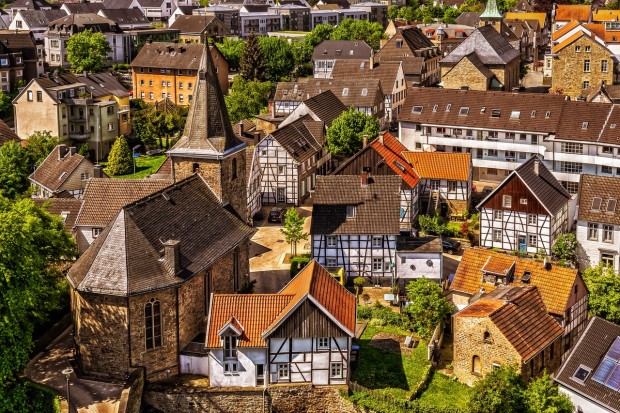Carbon footprints are one of the most significant sources of pollution, leading to climate change. Carbon footprints can be found in a variety of businesses. As a result, experts working in the building business are currently looking for solutions that will benefit our natural environment. They are presently adopting mass timber equipment to reduce carbon footprints and construct structures. But is it beneficial to our environment?

(Photo : Pixabay/PeterH )
Mass Timber Reduces Carbon Footprints
Based on the research conducted by the Environment Program of the United Nations., construction materials such as concrete, steel, glass, and masonry account for 9% of the world's carbon dioxide emissions,
As mentioned, the solution that appears to be a 'no-brainer' is engineered wood. In North America, single-family homes have been constructed with mass timber for decades. However, mass timber is different from conventional lumber. It is believed that the use of wood components in construction results in significantly lower levels of carbon dioxide emissions compared to the use of traditional materials. These components are robust enough to support an office tower or apartment structure. Because wood contains approximately 50% carbon, the material also stores a small amount.
For this reason, an increasing number of businesses, including Walmart Inc., Microsoft Corp., and Alphabet Inc.'s Google, are adopting mass wood to reduce their carbon footprints and promote their commitment to environmental sustainability. New construction can have a significant impact on lowering the carbon footprint of the building. Timber is the most environmentally friendly of all the primary building materials since it produces the most minor carbon dioxide emissions and consumes the least energy.
Cultivating timber in every region of the world is still a common practice. It will continue to be accessible as long as it can be replanted. Because the transformation of wood into timber for use in construction does not require a significant amount of energy, the amount of energy embodied in the material is minimal. Compared to other options that produce more pollution, this is an environmentally acceptable construction choice for these reasons.
Alarming Concerns to Producing Mass-Timbers
The carbon costs of timber over the entire life of a structure can be estimated by architects and engineers using the available tools. With the help of specialized software, users can do a life-cycle assessment, also known as an LCA, to determine the carbon footprint of any design concept, beginning with the harvesting of the material and continuing through the manufacturing of its parts, building and disposal.
According to Stephanie Carlisle, a senior researcher at the Carbon Leadership Forum at the University of Washington, many people are apprehensive about the climate benefits of greenwashing mass timber. Accordingly, they are interested in having a system that can support them. The NGO Building Transparency uses tallyLCA, which Carlisle helped develop, to assess the environmental effects of building designs. An additional tool that is extensively utilized in the sector is known as One Click LCA.
The carbon emissions that occur while transporting logs from the forest to the mill are considered when conducting life-cycle assessments. Additionally, energy is consumed during the manufacturing process of wood into mass-produced timber goods, including glued laminated timber (glulam) and cross-laminated timber (CLT). On top of that, there is the carbon emitted as construction cranes and tractors burn fuel, as well as when restorations and annual maintenance are performed over decades. Numerous processes occur in bn, each contributing to carbon emissions.
In addition, the question of how to account for the carbon footprint of industrial forestry is currently at the center of a debate on whether harvesting wood for mass lumber is environmentally friendly.
Related Article: Living a Green Life: 6 Ways to Create Sustainable and Eco-Friendly Homes







